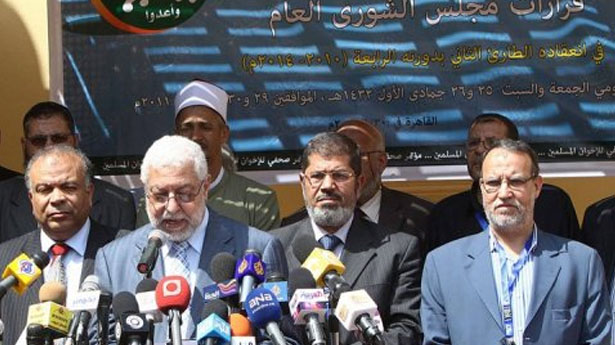MANILA: China’s government has just announced that Premier Wen Jiabao will be the main speaker at the 2009 Boao Forum for Asia, where the roster of leaders expected to participate is a virtual Who’s Who of the continent: President Asif Ali Zardari of Pakistan, President Nursultan Nazarbayev of Kazakhstan, President Faure Gnassingbe of Togo, Prime Minister S. Bayar of Mongolia, Prime Minister Thein Sein of Myanmar, Prime Minister Nguyen Tan Dung of Vietnam, Prime Minister John Key of New Zealand, and Kopsak Saphawasu, Deputy Prime Minister of Thailand.
Such meetings are vital for Asia, because the continent lacks the dense institutional infrastructure that Europe has built up over the past five decades. This year’s Boao Forum has become even more important because of the cancellation of the East Asia summit due to the action of violent protestors.
Multinational companies increasingly treat Asia as a single economic space, at least as far as production is concerned. This, of course, does not mean that Asia is, or is becoming, a single market, but rather that is now something of a tight-knit pan-national supply chain.
But, although Asia is becoming more like Europe in terms of economic integration, political and diplomatic integration lags behind. So, because Asia lacks such institutional arrangements, personal diplomacy of the type that the Boao Forum represents, like the annual global winter gathering at Davos, remains vitally important.
Indeed, it was at last year’s Boao Forum that Chinese President Hu Jintao began to express public optimism about the positive trends in Mainland China-Taiwan relations. That rapprochement was possible because Taiwan’s then newly elected vice president was given permission by China to attend the forum, where he was able to meet informally with President Hu.
Last February, I headed a 40-member trade delegation to Taipei. That mission’s highlight was my dialogue with Taiwanese President Ma Ying-jeou, who stressed the importance of connecting Taiwan to the China-ASEAN Free Trade Area (CAFTA) in the light of warmer relations developing between the Mainland and Taiwan.
At this time of economic turmoil around the world, increasing Taiwan’s formal economic links with China and its regional partners can only benefit everyone involved, because an inevitable side-effect will be a lessening of tension.
Unfortunately, some analysts suggest that a Taiwan-ASEAN Free Trade Agreement of the likes of CAFTA may not yet be possible, so, in the interim, President Ma’s administration is striving to achieve separate free-trade agreements with various ASEAN members. Understandably, the opposition Democratic Progressive Party (DPP) has taken the stand that Taiwan should seek closer ties with ASEAN countries rather than depend too much on Mainland China, but Ma does not see the two efforts as being mutually exclusive.
From a wider perspective, Ma and I exchanged views on the synergy of an emerging “Central East Asia Growth Polygon (CEAGPOL) consisting of the Philippines, Taiwan, Hong Kong, Macau, and the Mainland Chinese provinces of Guangdong and Fujian – plus, eventually, Hainan, Okinawa, and Guam/Marianas.
With goodwill on all sides, real advantages can materialize from building up this informal grouping, as it is a gateway to the huge markets of Southeast and Northeast Asia. An economic bonus of such an effort for the entire region would come from the opening of direct flights and sea transport across the Taiwan Strait.
CEAGPOL could even become a building block for a Northeast Asian version of ASEAN – an “Association of Northeast Asian Nations. As a result of historical suspicion between China, Japan, and Korea, Northeast Asia’s economic heavyweights are the world’s last remaining regional bloc that still lacks an inter-governmental organization of the likes of ASEAN. The European Union is even more instructive, because centuries of war, culminating in the two World Wars of the twentieth century, inspired, rather than deterred, European economic, political and security integration.
At this time of worldwide uncertainty, Asia-Pacific leaders must redouble their efforts to exploit their partnerships and strategic combinations in order to foster stability and growth. The easing of tensions between China and Taiwan can, perhaps, set a tone for all of Northeast Asia. At the 30th anniversary of the “Message to Compatriots in Taiwan last January, President Hu offered six proposals to improve relations:
1. Abandon the Taiwan independence movement;2. Stop confrontation and reach peaceful agreements;3. Increase military contacts/exchanges;4. Discuss Taiwan’s participation in international organizations under the “One China umbrella;5. Establish a Comprehensive Economic Cooperation Agreement (CECA); and6. Promote China’s traditional civilization with strengthened spiritual ties.
There is now real hope that talks along these lines can succeed. But there is a major obstacle to easing tensions: the proposed $6.5 billion sale by the United States to Taiwan of 30 Apache attack helicopters and 330 Patriot missiles. China-US talks on defense cooperation had earlier stalled because of such arms negotiations. They have since been restarted, an olive branch sent to the Obama administration by China’s government.
All three parties involved will need to tread with care to make certain that the thaw in China-Taiwan relations is not set back by this proposed arms deal. For, if Asia is to begin to build the type of dense institutional infrastructure that has brought Europe peace and prosperity, the flashpoint between China and Taiwan will need to be transformed into a foundation stone of regional cooperation.
Fidel V. Ramos,a former President of the Philippines, has been Chairman of the Boao Forum for Asia since 2001. This commentary is published by DAILY NEWS EGYPT in collaboration with Project Syndicate (www.project-syndicate.org).


